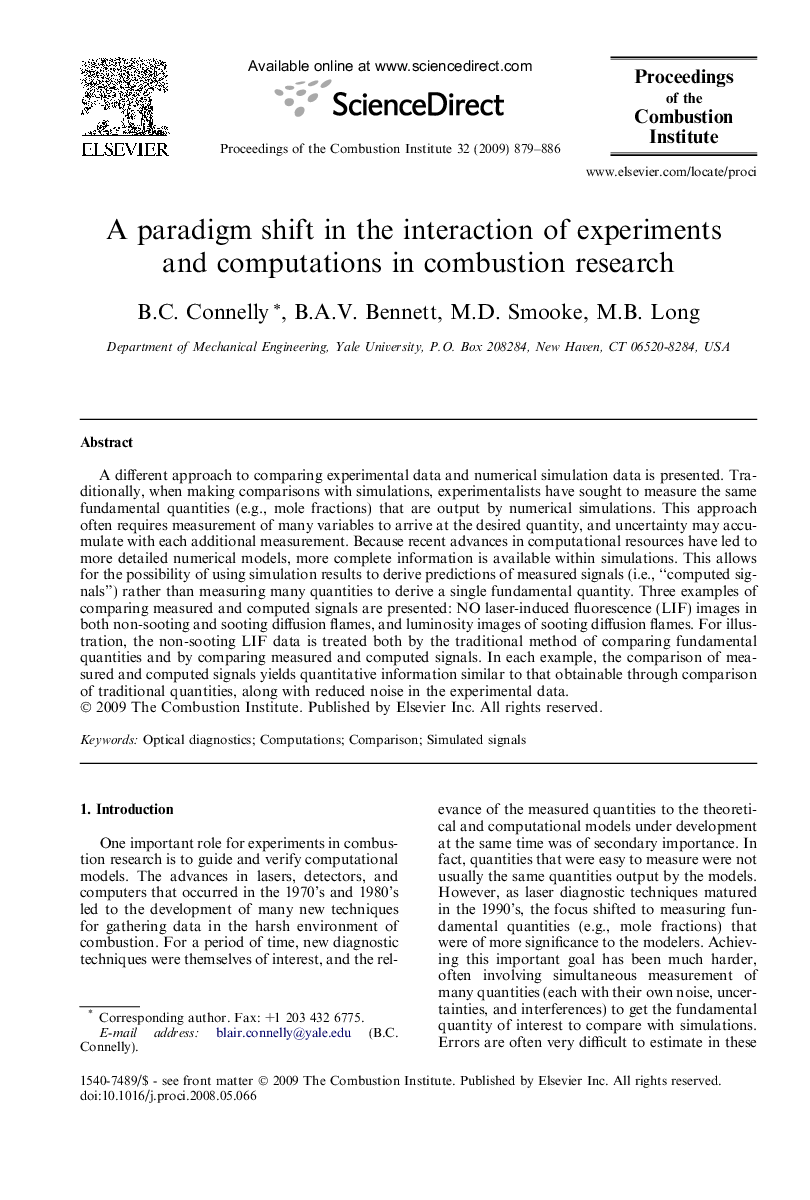| Article ID | Journal | Published Year | Pages | File Type |
|---|---|---|---|---|
| 6679486 | Proceedings of the Combustion Institute | 2009 | 8 Pages |
Abstract
A different approach to comparing experimental data and numerical simulation data is presented. Traditionally, when making comparisons with simulations, experimentalists have sought to measure the same fundamental quantities (e.g., mole fractions) that are output by numerical simulations. This approach often requires measurement of many variables to arrive at the desired quantity, and uncertainty may accumulate with each additional measurement. Because recent advances in computational resources have led to more detailed numerical models, more complete information is available within simulations. This allows for the possibility of using simulation results to derive predictions of measured signals (i.e., “computed signals”) rather than measuring many quantities to derive a single fundamental quantity. Three examples of comparing measured and computed signals are presented: NO laser-induced fluorescence (LIF) images in both non-sooting and sooting diffusion flames, and luminosity images of sooting diffusion flames. For illustration, the non-sooting LIF data is treated both by the traditional method of comparing fundamental quantities and by comparing measured and computed signals. In each example, the comparison of measured and computed signals yields quantitative information similar to that obtainable through comparison of traditional quantities, along with reduced noise in the experimental data.
Related Topics
Physical Sciences and Engineering
Chemical Engineering
Chemical Engineering (General)
Authors
B.C. Connelly, B.A.V. Bennett, M.D. Smooke, M.B. Long,
